Lifting Dam CFD Simulation, Ansys Fluent Training
$120.00 Student Discount
In this project, two different cases of lifting dams have been simulated and the results have been investigated.
Click on Add To Cart and obtain the Geometry file, Mesh file, and a Comprehensive ANSYS Fluent Training Video.To Order Your Project or benefit from a CFD consultation, contact our experts via email ([email protected]), online support tab, or WhatsApp at +44 7443 197273.
There are some Free Products to check our service quality.
If you want the training video in another language instead of English, ask it via [email protected] after you buy the product.
Description
Lifting Dam Project Description
Numerical simulation of lifting dam has been performed using Ansys Fluent software in this project. The VOF model is used to simulate two fluid phases, and the purpose of this project is to investigate the changes in the free surface of the fluid over time. Two models are reviewed in this project. In the first model, the flow continues its path after crossing the dam, but in the second model, it encounters an obstacle.
Geometry & Mesh
The two-dimensional geometry of this project has been produced with Spaceclaim software. The length of the computational area is 70 mm, and its height is 40 mm.
The meshing of these geometries has been done using Ansys Meshing software. The mesh type is unstructured in all of the computational domains. The element number for case 1 is equal to 86611 and for case 2 is equal to 132614.
Lifting Dam CFD Simulation Settings
We consider several assumptions to simulate the present model:
- Due to the incompressibility of the flow, the pressure-based solver method has been selected.
- The simulation is transient.
- The gravity effect is considered equal to -9.81 m.s-1on Y-axis
The Laminar viscous model has been used to solve the flow field equations, and the pressure-velocity coupling scheme is SIMPLE. The second-order upwind discretization method has been used for momentum and PRESTO! For the pressure discretization.
The following tables represent a summary of the defining steps of the problem in this project and its solution:
| Models | ||
| Multiphase | ||
| Homogeneous model | Volume of fluid | |
| Number of Eulerian phases | 2(air& water) | |
| Interface modeling | Sharp
Interfacial |
|
| Formulation | explicit | |
| Body force formulation | Implicit body force | |
| Viscous | Laminar | |
| Material Properties | |
| Air | |
| Density | 1.225 |
| viscosity | 1.7894e-05 |
| water-liquid | |
| Density | 998.2 |
| viscosity | 0.001003 |
| Methods | ||
| Pressure-Velocity Coupling | SIMPLE | |
| Pressure | PRESTO! | |
| Momentum | Second-order upwind | |
| Volume fraction | ||
| Initialization | ||
| Initialization methods | Standard | |
| Patch | Phase | Phase2 |
| Variable | Volume Fraction | |
| Registers to patch | Region_0 | |
| Value | 1 | |
| Run calculation | ||
| Time advancement | Type | adaptive |
| Parameters | ||
| Initial time step size | 0.0005 | |
| Settings | Minimum time step size | 0.0005 |
| Maximum time step size | 0.0005 | |
| Time step size | 2000 | |
Results
In this simulation, the free surface of the fluid when the dam is opened is investigated. After the solution process is completed, contours of velocity, pressure, and volume fraction are extracted. It is observed that in the second case after the flow hits the fluid barrier, reaches a relatively high altitude, which is due to the high kinetic energy in the initial moments.
[/vc_column_text]

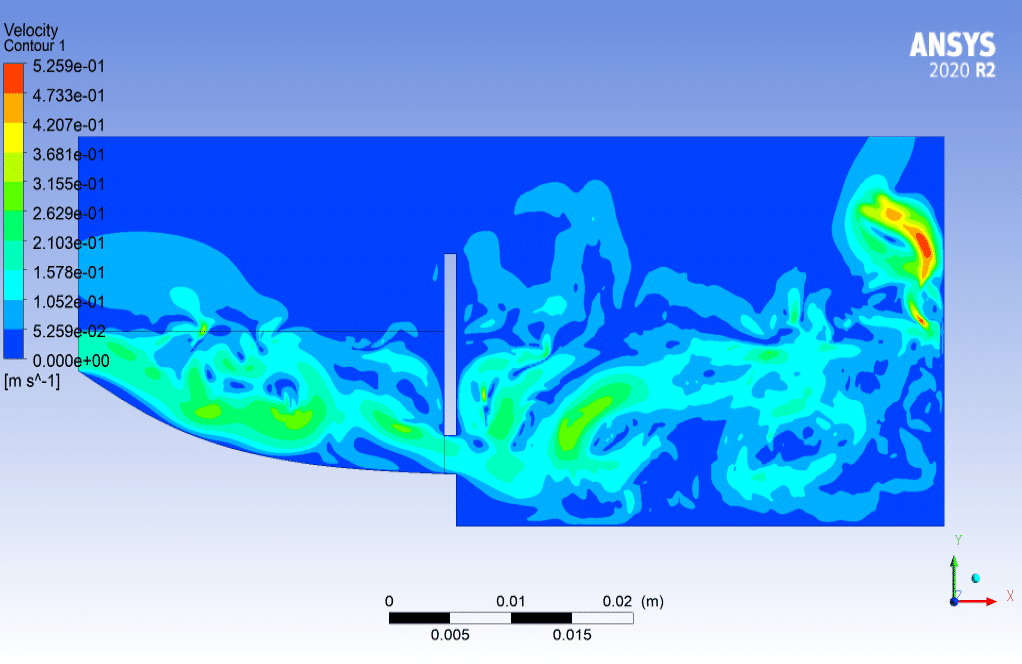
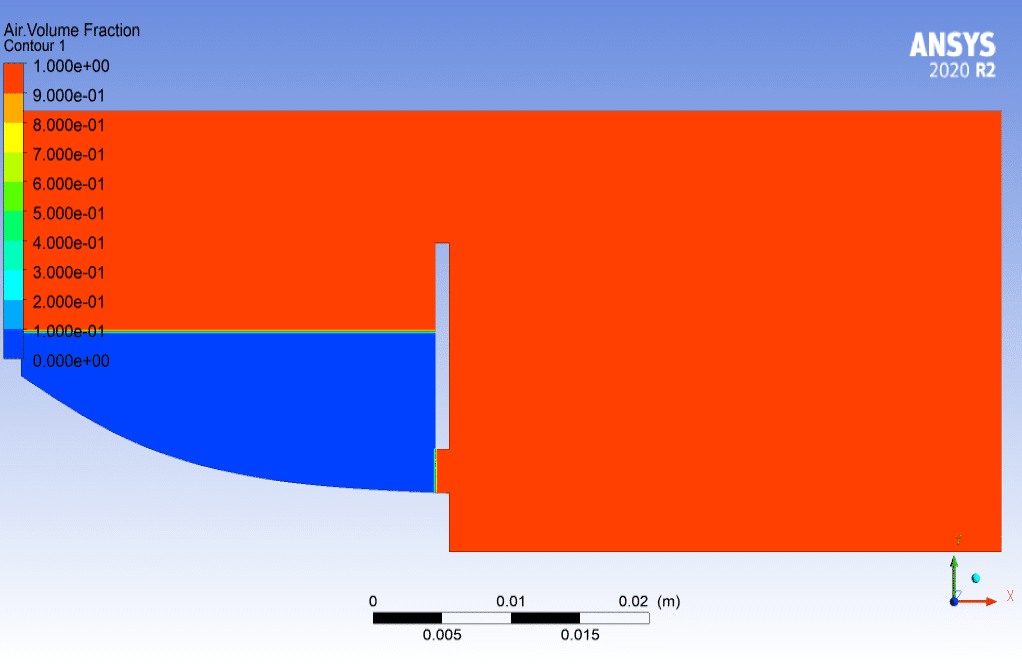
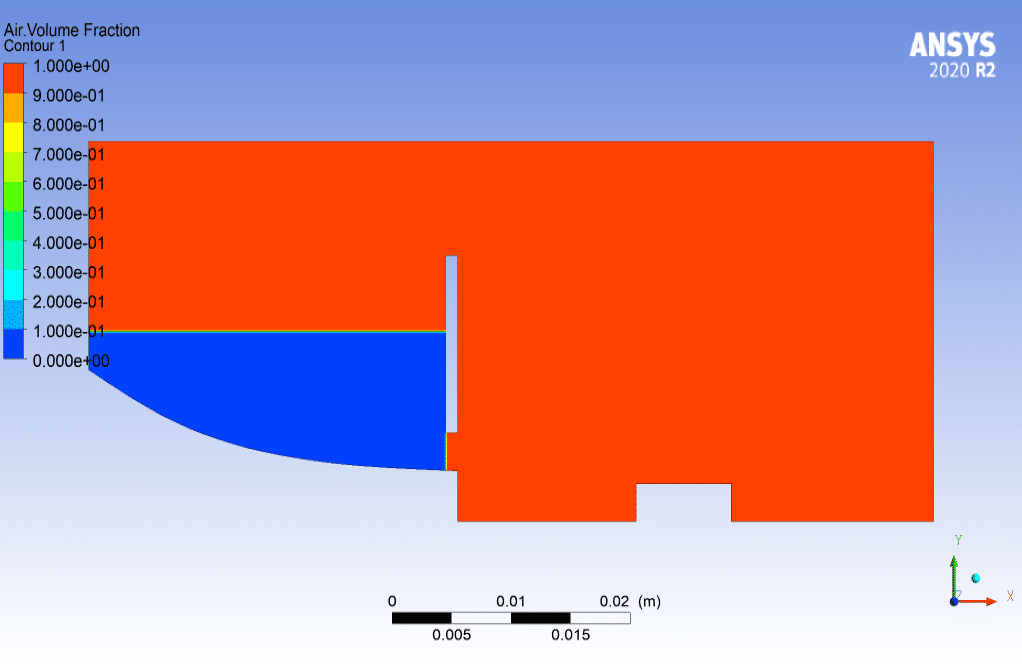
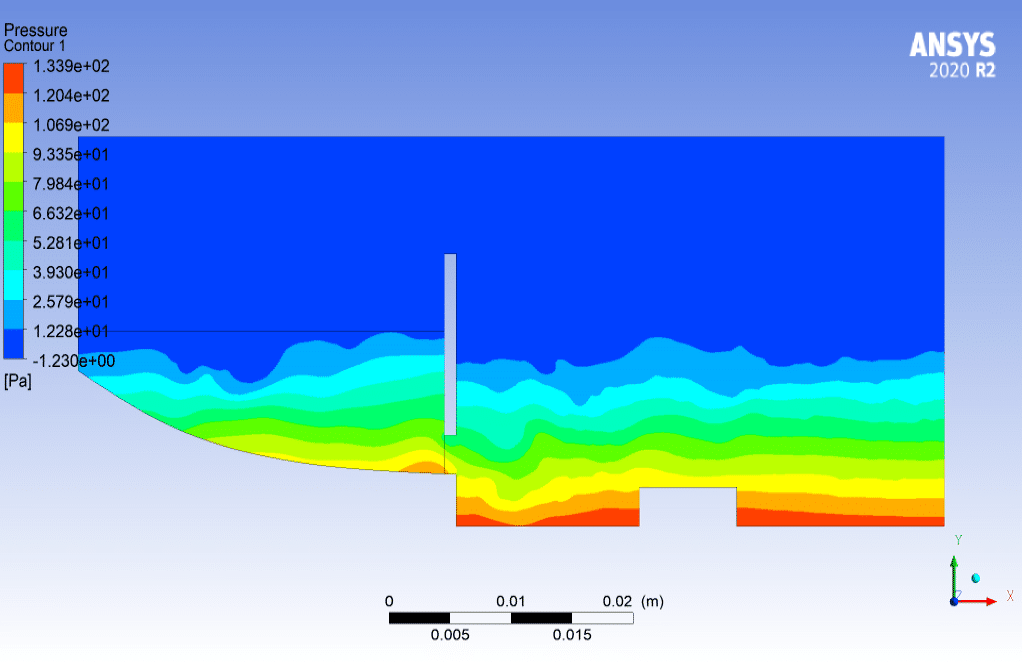
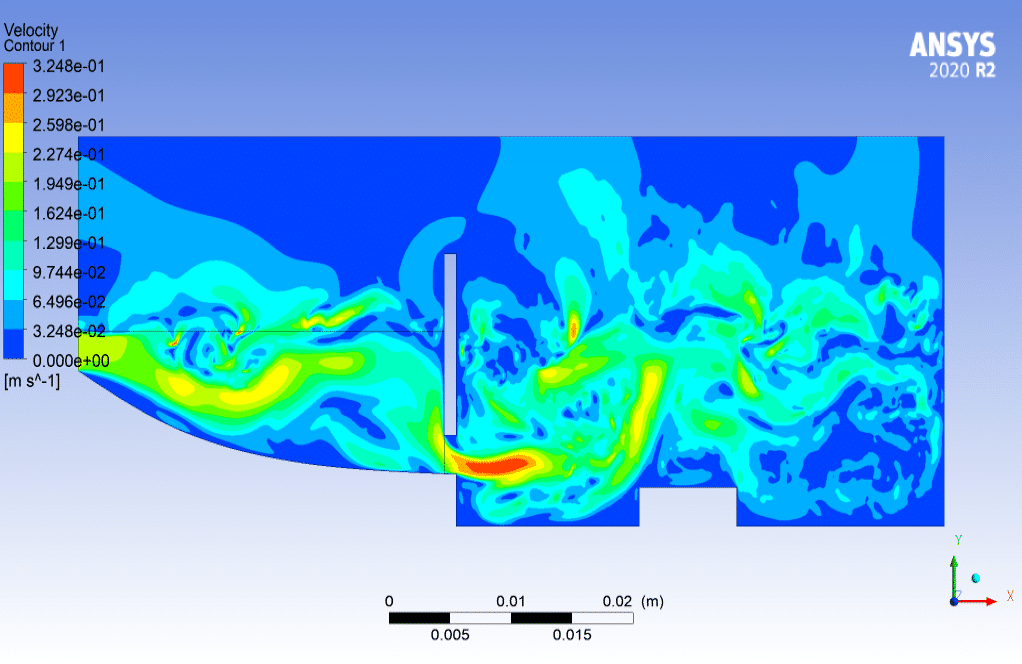
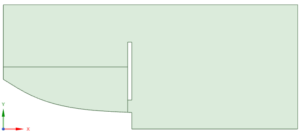


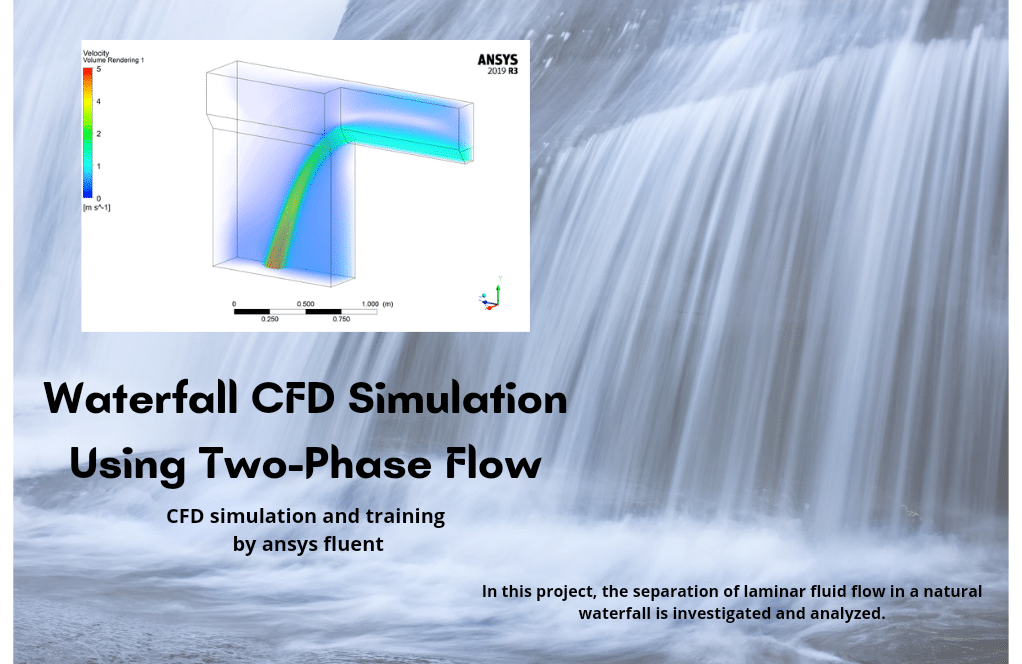
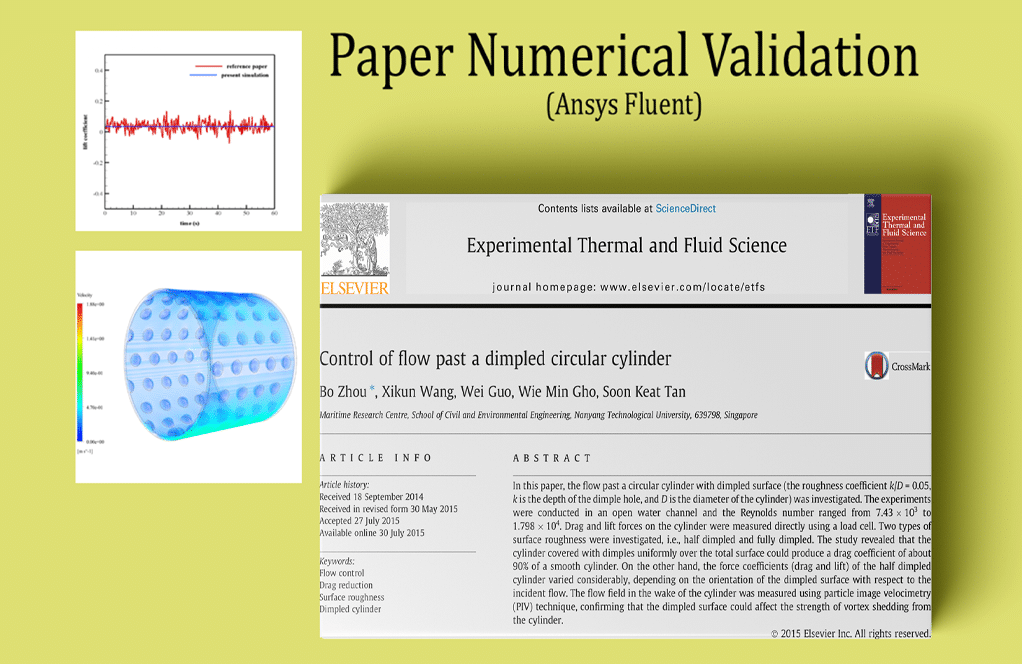

Dillon Rice –
The Lifting Dam CFD Simulation was incredible! Seeing the changes on the fluid’s surface when it encountered an obstacle was fascinating. How realistically does the simulation model mimic the behavior of water in a real lifting dam scenario?
MR CFD Support –
We are thrilled you found the simulation incredible! The simulation is designed to accurately mimic the water behavior in a real-life lifting dam scenario using advanced computational techniques and appropriate physics models. The VOF model and the careful setup of boundary conditions ensure that the simulation represents the fluid dynamics you would expect to see in a physical experiment, including wave formation and interaction with structures.
Alva –
Perfect! I am new to Ansys fluent. These tutorials are really helpful.
Franck J. –
What is the deffenrece between the” Eulerian VOF” model and the “VOF model”?
Dexter Corkery –
The simulation details provided are thorough. The use of the VOF model to capture the fluid’s free surface makes for an interesting study on fluid behavior post-dam lift. Great job on the mesh detail and adherence to physical phenomena with gravity and laminar flow considerations.
MR CFD Support –
Thank you for your kind words and recognition of our simulation’s comprehensive details. We’re pleased to hear that our approach, particularly the application of the Volume of Fluid model, met your expectations and provided you with valuable insights. We appreciate your positive feedback on our mesh work and physics settings. If you have any more questions or need further information, feel free to ask!
Miss Isabell Carter V –
The detail and explanation of this simulation are great! It’s pretty clear how the VOF model is employed and how changes in the fluid surface are monitored over time.
MR CFD Support –
Thank you for your kind words! We’re glad to hear that our explanation was clear and helpful. If you’re interested in exploring other simulations or have any more questions, feel free to reach out to us.
Pearl Jast –
The detailed fluid dynamics demonstrated in the Lifting Dam simulation are impressive. The initial surge in kinetic energy and resultant fluid height observed in the second case were particularly intriguing. Well done!
MR CFD Support –
Thank you! We’re glad you found the details of the Lifting Dam simulation intriguing and impressive. Signifying the kinetic energy translation into fluid motion accurately is fundamental in such simulations, and receiving positive feedback on it is very rewarding for our team. If you have further questions or need assistance with similar simulations, feel free to reach out!
Dr. Hilda Langosh –
The review really brings out the intricacies of the simulation process. Thanks for including the specifics, they highlight the sophisticated level of work done. Great job on utilizing a diverse range of factors and tools in your analysis!
MR CFD Support –
We greatly appreciate your detailed and positive feedback! It’s fantastic to hear that the comprehensive nature of the simulation was well-expressed, and we’re thrilled you found value in the depth and sophistication of the analysis. We work diligently to ensure that our simulations are both thorough and approachable, so it means a lot to hear that our efforts resonated with you. Thank you for sharing your thoughts!
Olga Schroeder –
This sounds like a fascinating simulation project. Would you be able to provide information on how you visualized the results and which software features were particularly useful for post-processing?
MR CFD Support –
Within the Ansys Fluent software, we used a variety of post-processing tools to visualize and examine the simulation data. Specifically, we employed tools to create contours and vectors of velocity, pressure, and volume fractions directly in the software. Features like dynamic plane sections and animations were incredibly useful to capture and visualize the changes over time as the dam lifted and the flow progressed.
Jordan Stamm –
I was really impressed by the detailed explanation of the simulation’s geometry and the comprehensive setup information. The VOF model seems well-implemented, especially in handling two fluid phases that come with their own challenges.
MR CFD Support –
Thank you for your kind words. We’re delighted to hear that our explanation of the simulation provided a clear understanding of the process and setup. We make sure to cover details meticulously so users like you find it rewarding. If you have any more feedback or need further information, feel free to reach out!
Rowena Emard –
This project seemed immensely helpful in reflecting the dynamics involved in dam operations! The visualization of the kinematics upon the lifting of the dam was particularly elucidating. The concept of the fluid barrier affecting the free surface profile was effectively captured in the simulations. An excellent educational resource for understanding fluid behavior in transient conditions associated with lifting dams.
MR CFD Support –
Thank you for your thoughtful feedback! We are pleased to hear that the Lifting Dam CFD Simulation provided clear insight into the dynamics and kinematics of dam operations and fluid behaviors in transient conditions. We strive to create detailed simulations that facilitate understanding and visualization of complex fluid interactions, and we’re glad this was effectively captured in our project. Your expression of appreciation is very encouraging for our team!
Stefanie Kohler –
I’m really impressed with the detail and depth of analysis your CFD simulation of lifting dams provided. It seems you have thought carefully about the real-world conditions and applied complex numerical methods to simulate the behavior of water and air when encountering a dam and obstacle. Great work on accurately representing physical phenomena and fluid behavior using Ansys Fluent!
MR CFD Support –
Thank you for your kind words! We strive to ensure our simulation projects are as detailed and realistic as possible, truly capturing the essence of fluid dynamics in real-world scenarios. It’s great to hear that you appreciate the depth of analysis in the lifting dam CFD simulation. If you have any more questions or need further information, don’t hesitate to reach out.
Terrance Upton –
The level of detail in the project description is fantastic! It provides a comprehensive understanding of both the setup and findings of the lifting dam simulation. The explanation of the geometry, meshing, CFD simulation settings, and results gives a solid picture of the methodology and outcome. Being able to see how the fluid’s free surface changes over time and the effects of encountering an obstacle really demonstrates the capabilities of Ansys Fluent in modeling complex fluid dynamics. Kudos on a well-executed project!
MR CFD Support –
Thank you for sharing your positive experience with our Lifting Dam CFD Simulation training. We are thrilled to hear you appreciated the details provided in the project description and that the information was clear and helpful. Our goal is always to ensure a thorough understanding of the simulation process and its results, and it’s rewarding to know this was achieved for you.
June Beahan –
The simulation of the lifting dam is exceptionally well-presented, and the methodology provides information down to every detail. Even though mastering such refinements in fluid dynamics and CFD analysis is sometimes challenging, this training seems to make it digestible. Great work!
MR CFD Support –
Thank you for your appreciation! We are thrilled to know that you found our lifting dam CFD simulation training helpful and detailed. We strive to make complex concepts accessible and are happy to hear about your positive experience. If you need further assistance or have any more questions about any of our other training materials, please don’t hesitate to reach out.
Scarlett Homenick I –
This Lifting Dam CFD project is impressive! The detailed mesh work and comprehensive simulation setup provide a clear insight into the fluid dynamics involved.
MR CFD Support –
Thank you for recognizing the effort put into the Lifting Dam CFD project. We always strive to deliver detailed and accurate simulations. We’re glad it provided you with clear insights!